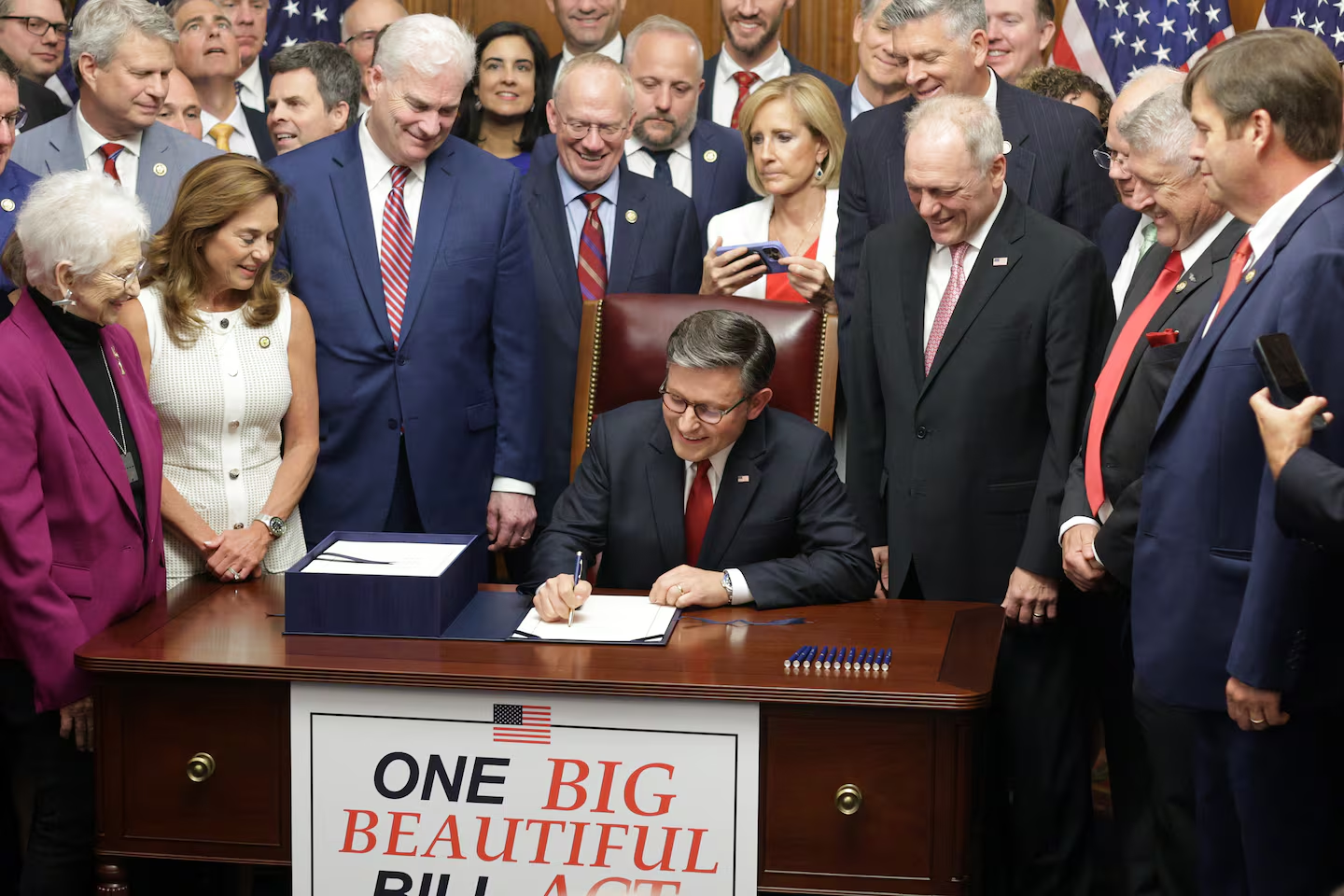Washington, D.C. — July 3, 2025
In a historic move just one day before Independence Day, the U.S. House of Representatives narrowly approved a sweeping tax-and-spending bill championed by President Donald Trump. Dubbed the “One Big Beautiful Bill,” the legislation passed with a razor-thin 218–214 vote, signaling a major fiscal and ideological shift in Washington.
The bill now heads to President Trump’s desk for signature, with a high-profile signing ceremony scheduled for July 4th at the White House — a move symbolic of his administration’s vision for economic reform and national pride.
What’s Inside the Bill
The legislation merges tax relief, expanded business incentives, and deep cuts to federal welfare programs into one comprehensive package. Key provisions include:
- Permanent Tax Cuts for Individuals and Families
The bill locks in previous tax reductions and increases the child tax credit, raises the standard deduction, and introduces new deductions for seniors. Overtime pay and tips will also be exempt from federal taxes. - Corporate and Small Business Boosts
The bill extends corporate tax cuts and offers new incentives for American manufacturing and small business innovation. It also raises the cap on state and local tax (SALT) deductions for low and middle-income earners. - Massive Cuts to Social Programs
To balance the budget impacts, the bill slashes hundreds of billions in funding from Medicaid and food assistance programs. New work requirements and eligibility checks will be introduced, affecting millions of low-income Americans. - Increased Defense and Border Funding
Significant funds are allocated to military modernization and a new missile defense system. Additionally, billions are set aside to expand immigration enforcement, border security, and detention facilities.
The Political Drama Behind the Vote
The bill’s passage followed intense pressure from the White House. In recent days, President Trump publicly called out Republican holdouts and rallied supporters to push lawmakers to fall in line. Several undecided conservatives and moderates switched their votes at the last moment after high-stakes negotiations.
Meanwhile, House Minority Leader Hakeem Jeffries delivered a nearly nine-hour speech — the longest in House history — in a dramatic attempt to stall the vote and bring attention to what he called an “assault on working families.”
Despite near-unanimous Democratic opposition, Republicans ultimately rallied just enough support to move the bill forward, uniting under the president’s promise of delivering sweeping reform before the July 4th holiday.
Mixed Reactions Across the Country
Supporters hail the bill as a bold step toward economic freedom, lower taxes, and stronger national security. Critics, however, warn of devastating consequences for healthcare access, rising inequality, and a ballooning national debt.
Healthcare advocates and poverty organizations argue the cuts will lead to millions losing Medicaid coverage and increased hardship for vulnerable populations. Economists are divided, with some praising the bill’s potential for growth and investment, while others caution against the long-term fiscal risks.
What’s Next?
President Trump is expected to sign the bill into law during a televised July 4th event, celebrating what the administration calls a “new economic era for America.” While Republicans are calling it a major legislative victory, Democrats are already planning legal and electoral challenges to some of the bill’s more controversial elements.
As the country celebrates its independence, political fireworks may just be getting started in Washington.
















Leave a Reply